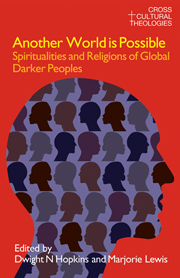Book contents
- Frontmatter
- Dedication
- Contents
- Acknowledgements
- Contributors
- Introduction
- Part I India
- Part II Japan
- Part III Australia
- Part IV Hawaii
- Part V England
- Part VI South Africa
- Part VII Botswana
- Part VIII Zimbabwe
- Part IX Ghana
- Part X Cuba
- Part XI Jamaica
- Part XII Brazil
- 21 Black Spirituality: The Anchor of Black Lives
- 22 Black Heritage in Brazil
- Part XIII USA
- Endnotes
- Select Bibliography
- Index of Subjects
- Index of Names
22 - Black Heritage in Brazil
from Part XII - Brazil
- Frontmatter
- Dedication
- Contents
- Acknowledgements
- Contributors
- Introduction
- Part I India
- Part II Japan
- Part III Australia
- Part IV Hawaii
- Part V England
- Part VI South Africa
- Part VII Botswana
- Part VIII Zimbabwe
- Part IX Ghana
- Part X Cuba
- Part XI Jamaica
- Part XII Brazil
- 21 Black Spirituality: The Anchor of Black Lives
- 22 Black Heritage in Brazil
- Part XIII USA
- Endnotes
- Select Bibliography
- Index of Subjects
- Index of Names
Summary
“[…] we have the Africa in our kitchens like the America in our jungles, and the Europe in our halls […] Run the specialists, since the poor, moçambiquences, benguelas, monjolos, congos, cabindas, caçangas … go dying…” Silvio Romero
The origin
Brazil is the largest country in Latin America. Discovered by a Portuguese navigator who commanded an expedition chartered toward India in 1500, it includes in its history, since the beginning of its colonization, a past of conquest, private ownership and slavery.
It is a country extremely rich in cultural, natural, racial, social and religious diversity. Brazil is considered one of the countries that expresses most the real meaning of diversity, multi-culturality, and difference than any other nation in the world.
Colonized by the Portuguese, inhabited by aboriginals when discovered, but with the forced enslavement of blacks from some parts of Africa, Brazil is a country with a population of around 188,440,947 inhabitants. It is comprised of a mix of coloured peoples, the majority of whom descend from blacks and aboriginals, but also descendants of Europeans, Asians, and Arabs. Most immigrated in search of wealth or better conditions of life.
The first blacks arrived in Brazil as slaves in the middle of the sixteenth century around 1538. In the beginning, they were brought in small numbers mainly from the West African coast and represented three cultural African groups. The first one—Yorubá (nagô), Dahomey (gegê), and Fanti-Ashanti (minas)—came from Gambia, Sierra Leone, Costa da Malagueta, and Costa do Marfim.
- Type
- Chapter
- Information
- Another World is PossibleSpiritualities and Religions of Global Darker Peoples, pp. 300 - 304Publisher: Acumen PublishingPrint publication year: 2009



